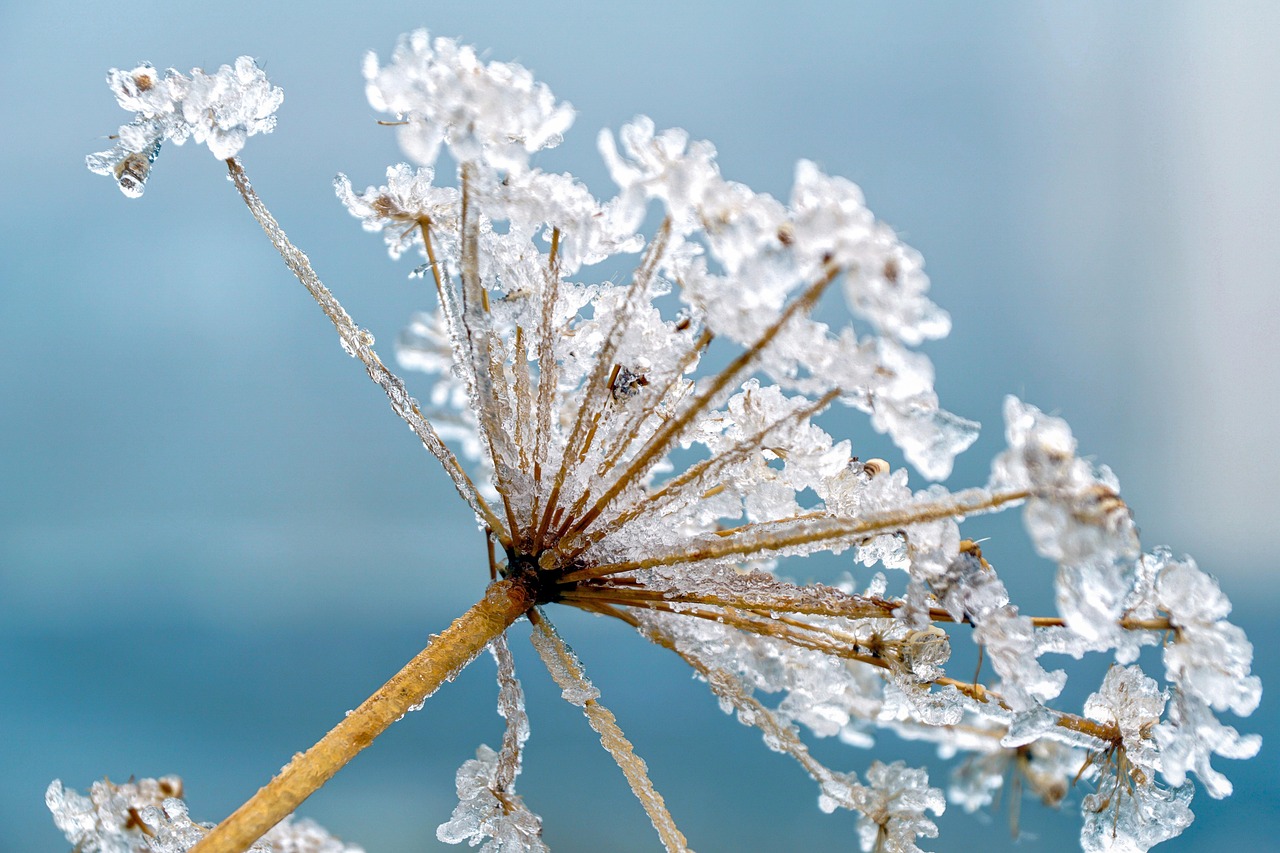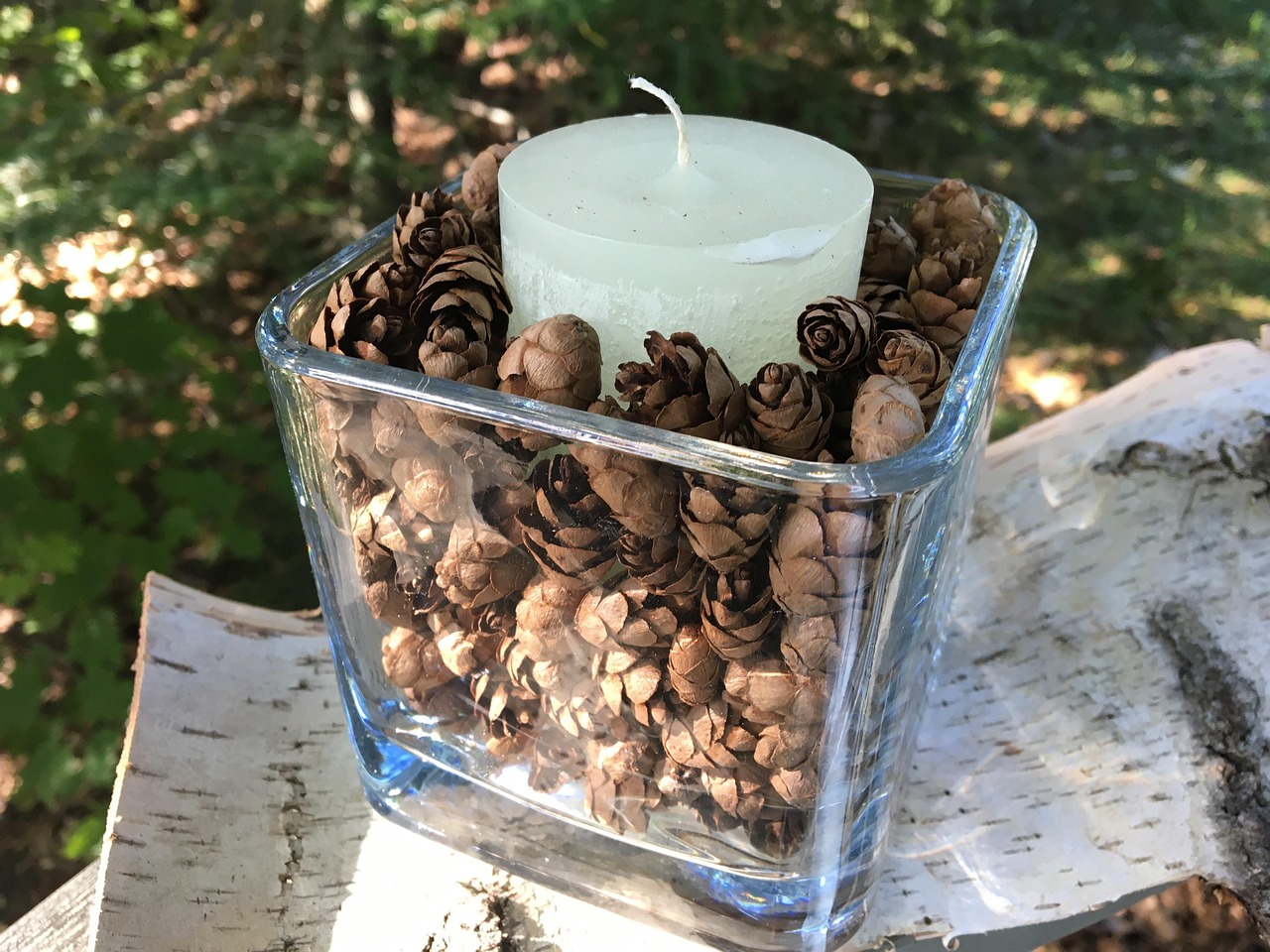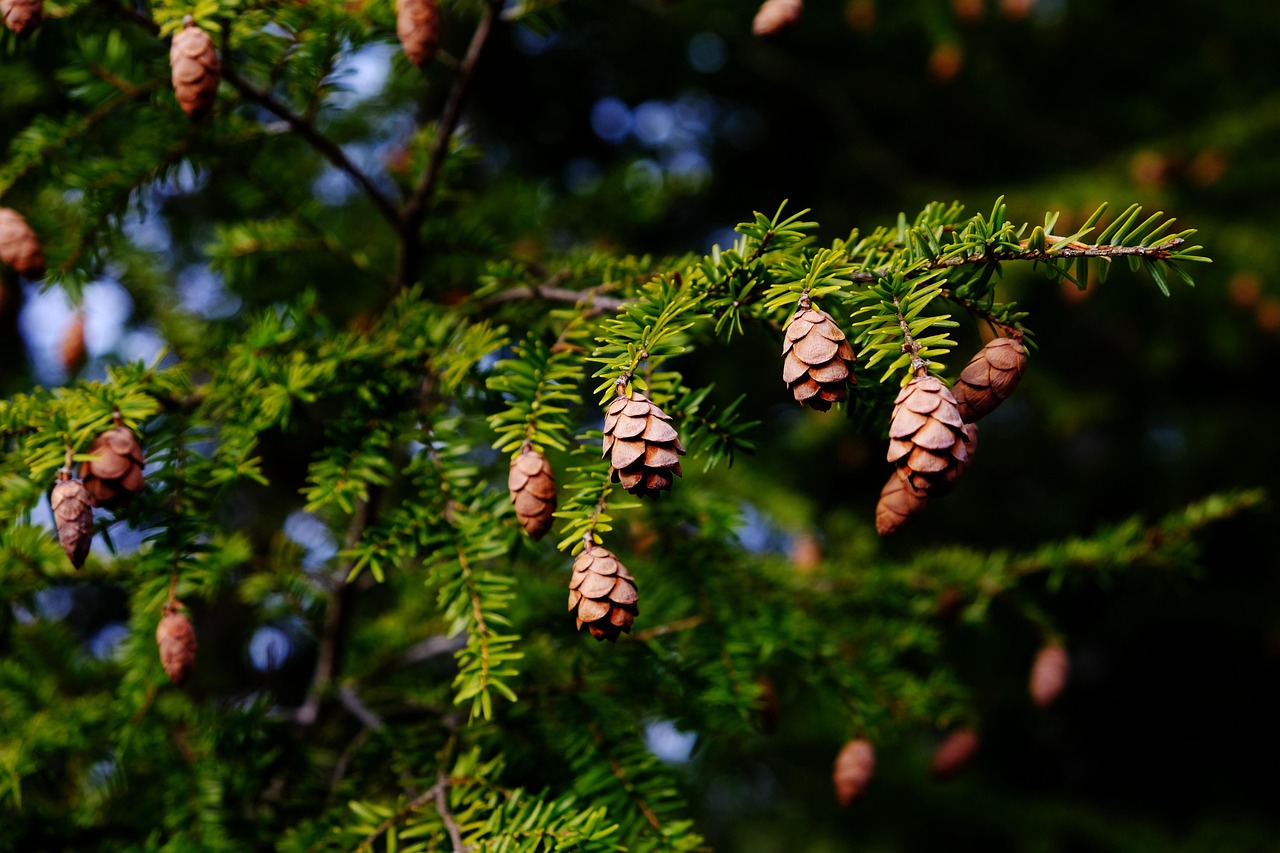Hemlock trees, particularly Tsuga canadensis and Tsuga heterophylla, generally exhibit a moderate growth rate in cool, moist regions. Under ideal conditions, they can grow between 12 to 24 inches per year, reaching maturity in 50 to 100 years.
Understanding Hemlock Trees
Hemlock trees belong to the Pinaceae family and are known for their graceful appearance and dense foliage. These trees are typically found in the eastern United States and the western coastal regions of North America. Their preference for cool, moist climates makes them well-suited for areas with high rainfall and moderate temperatures.

There are two primary species of hemlock: the Eastern Hemlock (Tsuga canadensis) and the Western Hemlock (Tsuga heterophylla). Both species thrive in similar environmental conditions, but they have distinct characteristics. The Eastern Hemlock is often found in mountainous regions, while the Western Hemlock grows along the coastal ranges.
Growth Conditions
The growth rate of hemlock trees is significantly influenced by various environmental factors. Here are some key conditions that promote optimal growth:
- Soil Quality: Hemlocks prefer well-drained, acidic soils enriched with organic matter.
- Moisture Levels: Consistent moisture is crucial. These trees thrive in areas with ample rainfall or near water sources.
- Temperature: Cool temperatures are ideal. Hemlocks flourish in climates where summer temperatures do not exceed 85°F (29°C).
- Light Availability: While hemlocks can tolerate shade, they grow best in partial sunlight.
Growth Rate Characteristics
The growth rate of hemlock trees varies based on their age, environment, and genetic factors. Young hemlocks tend to grow rapidly during their early years, but this growth can slow down as they mature. Below is a comparison of growth rates for different life stages:

| Age (Years) | Average Growth Rate (Inches/Year) |
|---|---|
| 1-5 | 12-24 |
| 6-20 | 8-12 |
| 21-50 | 4-8 |
| 51+ | 1-4 |
This table illustrates how growth rates can vary significantly throughout a hemlock’s life. Young trees demonstrate vigorous growth, while older trees experience a gradual decline in their growth rate.
Impact of Environmental Stressors
While hemlocks thrive in cool, moist conditions, they are not immune to environmental stressors. Factors such as drought, pests, and diseases can impede their growth. For instance, the Hemlock Woolly Adelgid is an invasive pest that poses a significant threat to hemlock populations, particularly in the eastern United States. Infestations can result in stunted growth and eventual tree mortality.
Additionally, climate change has introduced new challenges. Increased temperatures and altered precipitation patterns can affect soil moisture levels and disrupt the delicate balance required for hemlock health. As a result, monitoring environmental conditions is crucial for maintaining healthy hemlock forests.

Cultivation Practices
For those interested in cultivating hemlock trees, understanding their growth requirements is essential. Proper planting and care can enhance their growth rate and longevity. Here are some recommended practices:
- Selecting the Right Site: Choose a location that mimics their natural habitat—cool, shaded areas with well-draining soil.
- Watering: Ensure consistent moisture, especially during dry spells.
- Soil Amendments: Add organic matter to improve soil quality and drainage.
- Pest Management: Regularly inspect for pests and diseases to protect trees from potential threats.
By implementing these practices, gardeners and landowners can help ensure the successful growth of hemlock trees in suitable regions.
Factors Influencing Growth Rates
The growth rate of hemlock trees is influenced by various internal and external factors. Understanding these factors can help in developing strategies for better cultivation and management of these trees in cool, moist regions. Below are some of the most significant influences on hemlock growth.

Soil Composition
The physical and chemical properties of soil play a crucial role in the growth of hemlock trees. Hemlocks thrive in acidic soils rich in organic matter. The following components are essential:
- pH Level: Hemlocks prefer soils with a pH range of 5.0 to 6.5. Soils that are too alkaline may hinder nutrient uptake.
- Nutrient Availability: Essential nutrients such as nitrogen, phosphorus, and potassium should be present in adequate amounts for optimal growth.
- Soil Texture: Well-drained sandy loam or silt loam is ideal for hemlock trees. Poor drainage can lead to root rot and other diseases.
Climate Conditions
Climate significantly impacts hemlock growth rates. The following climatic factors are particularly important:
- Temperature: Hemlocks grow best in cooler climates. Extreme heat can stress the trees, slowing their growth.
- Humidity: High humidity levels promote healthy foliage and reduce water loss through transpiration.
- Precipitation: Regular rainfall ensures soil moisture, which is vital for growth. Areas receiving 40 to 100 inches of rain annually are optimal.
Competition and Canopy Dynamics
The growth rate of hemlocks can also be affected by competition with other tree species. In dense forests, young hemlocks often compete for light, nutrients, and water. Here are some aspects to consider:
- Light Competition: Hemlocks can tolerate shade but require some sunlight for optimal growth. Dense canopies can limit their access to light.
- Root Competition: Other trees can absorb essential nutrients from the soil, reducing availability for hemlocks.
- Forest Management: Thinning procedures may be necessary to help younger hemlocks thrive by reducing competition.
Pest and Disease Management
Pests and diseases can severely impact the health and growth rate of hemlock trees. Effective management strategies are essential for maintaining tree vigor. Some common pests and diseases include:
Common Pests
- Hemlock Woolly Adelgid (HWA): This invasive pest feeds on the sap of hemlock trees, leading to needle drop and eventual tree death.
- Eastern Pine Beetle: Although primarily affecting pines, this beetle can also impact hemlocks when populations are high.
- Spider Mites: These pests can cause yellowing and stippling on leaves, affecting overall tree health.
Disease Management
Diseases can also hinder growth rates. Common diseases include:
- Root Rot: Caused by pathogens in overly saturated soils, leading to tree decline.
- Canker Diseases: Fungal infections that can result in bark lesions and dieback.
Implementing an integrated pest management strategy that combines biological control, chemical treatments, and cultural practices can help mitigate these issues.
The Role of Hemlocks in Ecosystems
Hemlock trees play a vital role in their ecosystems beyond their aesthetic value. Their presence affects biodiversity, soil health, and water quality.
Biodiversity Enhancement
Hemlocks provide habitat and food for various wildlife species, including birds, mammals, and insects. The dense foliage offers shelter while the seeds serve as a food source for many animals.
Soil Stabilization
The root systems of hemlock trees help prevent soil erosion, particularly on slopes. This stabilization is crucial for maintaining landscape integrity in forested areas.
Water Quality Improvement
Hemlocks contribute to water quality by filtering runoff and reducing sedimentation in nearby streams and rivers. Their canopy intercepts rainfall, allowing water to percolate slowly into the ground, thus enhancing groundwater recharge.
Hemlock Tree Propagation Methods
Understanding how to propagate hemlock trees is essential for those looking to cultivate them effectively. There are several methods available, each with its advantages and challenges. The most common propagation techniques include seed sowing, cuttings, and grafting.
Seed Propagation
Seed propagation is the most natural and widely used method for growing hemlock trees. Here are the steps involved:
- Seed Collection: Collect seeds in late summer or early fall when cones are mature. Ensure that seeds are viable by checking for a firm texture and full size.
- Seed Preparation: Clean the seeds to remove any debris. Some recommend a cold stratification process, where seeds are stored in a cool, moist environment for several weeks to enhance germination.
- Sowing: Plant the seeds in well-draining soil, ideally in a shaded area or under a nursery structure. A depth of ¼ inch is sufficient.
Germination typically occurs in spring. Provide consistent moisture to encourage healthy seedling growth.
Cuttings
Another propagation method involves taking cuttings from healthy hemlock trees. This method can be more challenging but often results in faster growth. Here’s how to do it:
- Selection: Choose healthy, non-flowering branches from the current season’s growth. Semi-hardwood cuttings are preferable.
- Preparation: Cut a 6-8 inch segment from the branch, ensuring that there are at least two sets of leaves. Remove the lower leaves to prevent rot.
- Rooting Hormone: Dip the cut end of the cutting in rooting hormone to promote root development.
- Planting: Insert the cutting into a pot filled with a sterile propagation mix. Keep the soil consistently moist and provide indirect light.
Roots should develop within a few months, after which the new plants can be transplanted into larger containers or directly into the ground.
Grafting
Grafting is another propagation technique, especially useful for maintaining specific characteristics of a tree variety. Follow these steps for successful grafting:
- Scion Selection: Choose a healthy scion (the part of the plant that will become the new tree) from a desirable hemlock variety.
- Stock Preparation: Select a compatible rootstock, ideally another hemlock species or variety. Make a clean cut on the rootstock to prepare for the graft.
- Grafting Technique: Employ a grafting method such as whip-and-tongue or cleft grafting, ensuring that the cambium layers of both scion and rootstock align.
- Binding: Secure the graft with tape or grafting wax to maintain moisture and protect against pathogens.
This method can be particularly beneficial for propagating hemlocks that are resistant to specific pests or diseases.
Cultural Practices for Promoting Growth
Once hemlock trees are established, maintaining their health through proper cultural practices is essential for optimal growth rates. Below are some effective strategies:
Irrigation Management
Irrigation is crucial during dry spells, especially for younger trees. Here are some tips:
- Frequency: Water deeply but infrequently to encourage deep root growth. Avoid shallow watering, which can lead to weak roots.
- Time of Day: Water early in the morning or late in the afternoon to reduce evaporation.
- Soil Moisture Monitoring: Use soil moisture sensors or simply check the soil by hand to determine when watering is necessary.
Nutrient Management
Nutrient availability significantly influences hemlock growth rates. Regular soil testing can help determine nutrient deficiencies. Here are some practices to consider:
- Fertilization: Apply a balanced fertilizer designed for acid-loving plants in early spring.
- Organic Matter Addition: Incorporate compost or well-rotted manure into the soil to improve nutrient content and soil structure.
- Avoid Over-fertilization: Excessive fertilizer can harm hemlocks by causing nutrient imbalances and promoting pest infestations.
Pest and Disease Monitoring
Regular monitoring for pests and diseases is vital for maintaining tree health. Implementing an integrated pest management approach can help manage potential threats effectively:
- Regular Inspections: Check trees for signs of pests or disease at least once per month.
- Pest Identification: Familiarize yourself with common pests and their signs to catch infestations early.
- Cultural Controls: Promote biodiversity around hemlocks to create a balanced ecosystem that naturally deters pests.
By employing these cultural practices, landowners can support the healthy growth of hemlock trees while enhancing their overall resilience against environmental stressors.
Challenges in Hemlock Growth
Despite their adaptability to cool, moist environments, hemlock trees face several challenges that can affect their growth rates. Identifying and addressing these challenges is important for successful cultivation.
Climate Change Impacts
The effects of climate change are increasingly evident in forest ecosystems. Hemlock trees may be particularly vulnerable due to their specific environmental requirements. Key impacts include:
- Temperature Increases: Rising temperatures can lead to heat stress, impacting growth and overall health.
- Altered Precipitation Patterns: Changes in rainfall can lead to increased drought conditions or excessive moisture, both of which can adversely affect hemlocks.
- Increased Pest Pressure: Warmer conditions may allow invasive pests to thrive, posing a greater threat to hemlock populations.
Forest Management Practices
Effective forest management practices are necessary to mitigate the challenges faced by hemlock trees. These practices can enhance growth rates and promote long-term sustainability:
- Selective Logging: Avoiding clear-cutting preserves the forest structure and allows remaining trees to continue growing.
- Thinning: Removing competing vegetation can improve light availability for hemlocks, boosting their growth rates.
- Monitoring and Adaptive Management: Regular assessments of forest health and dynamic management strategies can respond to changing conditions effectively.
The Future of Hemlock Trees
The future of hemlock trees in cool, moist regions depends on a combination of conservation efforts, research, and community involvement. Here are some promising approaches:
Conservation Efforts
Numerous organizations and initiatives focus on conserving hemlock forests. Efforts include:
- Restoration Projects: Replanting hemlocks in areas where they have declined significantly helps restore ecosystem balance.
- Pest Management Programs: Initiatives aimed at controlling invasive pests like the Hemlock Woolly Adelgid are crucial for protecting existing trees.
- Public Awareness Campaigns: Educating the public about the importance of hemlocks fosters community support for preservation efforts.
Research and Innovation
Ongoing research is essential for understanding hemlock biology, ecology, and responses to climate change. Some areas of focus include:
- Genetic Studies: Researching genetic variation within hemlock populations may lead to the development of more resilient strains.
- Ecosystem Services Research: Understanding the ecological benefits provided by hemlocks can strengthen arguments for their conservation.
- Monitoring Technologies: Advancements in technology can facilitate better monitoring of tree health and pest outbreaks.
Final Thoughts
The growth rate of hemlock trees in cool, moist regions is influenced by a multitude of factors, including soil conditions, climate, and management practices. Understanding these factors allows for effective cultivation and enhances the sustainability of hemlock populations. As we face environmental changes and increasing pressures from pests and diseases, proactive measures are essential for promoting healthy hemlock growth.
The role that hemlocks play in their ecosystems cannot be overstated, contributing significantly to biodiversity, soil stabilization, and water quality. By prioritizing conservation efforts, embracing research innovations, and implementing sound management practices, we can ensure that these majestic trees continue to thrive for generations to come.
The future of hemlock trees lies not only in understanding their growth dynamics but also in collective action at community and institutional levels to protect and nurture these vital components of our forests.
